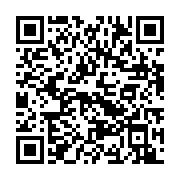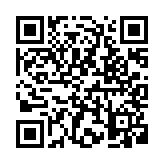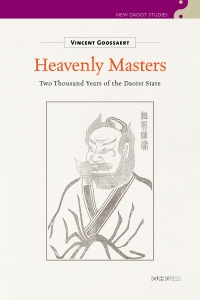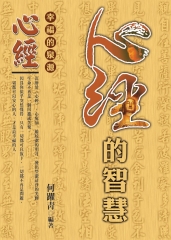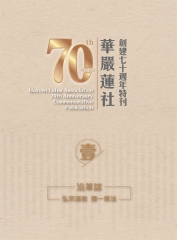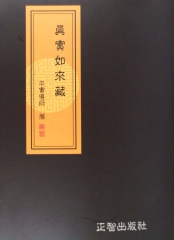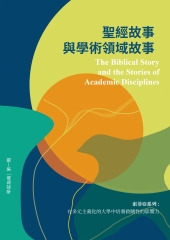- 首頁
- >
- 書籍詳目頁
- 作者: Vincent Goossaert (著)
- 學科分類: 宗教類
- 書籍分類: 宗教研究 ; 文學院
- 出版社: 香港中文大學出版社
- 出版地:香港
- 出版日期:2021/09/20
- 語文:英文
- ISBN/識別號:9789882372023
Heavenly Masters:Two Thousand Years of the Daoist State
可使用:0人
線上閱讀中:0人
下載閱讀中:0人
借閱天數:0天
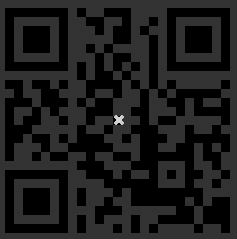
推薦採購不提供QR CODE
線上閱讀
本書提供兩種檔案格式,請選擇開啟:
EPUB彈性排版,可依載具大小自動斷行或換頁,較適合小螢幕閱讀。
書籍內容
TOP
The origins of modern Daoism can be traced to the Church of the Heavenly Master (Tianshidao), reputedly established by the formidable Zhang Daoling. In 142 CE, according to Daoist tradition, Zhang was visited by the Lord on High, who named him his vicar on Earth with the title Heavenly Master. The dispensation articulated an eschatological vision of saving initiates—the pure, those destined to become immortals— by enforcing a strict moral code. Under evolving forms, Tianshidao has remained central to Chinese society, and Daoist priests have upheld their spiritual allegiance to Zhang, their now divinized founder. This book tells the story of the longue durée evolution of the Heavenly Master leadership and institution.
Later hagiography credits Zhang Daoling’s great-grandson, putatively the fourth Heavenly Master, with settling the family at Longhushan (Dragon and Tiger Mountain); in time his descendants—down to the present contested sixty-fifth Heavenly Master living in Taiwan— made the extraordinary claim of being able to transmit hereditarily the function of the Heavenly Master and the power to grant salvation. Over the next twelve centuries, the Zhangs turned Longhushan into a major holy site and a household name in the Chinese world, and constructed a large administrative center for the bureaucratic management of Chinese society. They gradually built the Heavenly Master institution, which included a sacred site; a patriarchal line of successive Heavenly Masters wielding vast monopolistic powers to ordain humans and gods; a Zhang lineage that nurtured talent and accumulated wealth; and a bureaucratic apparatus comprised of temples, training centers, and a clerical hierarchy. So well-designed was this institution that it remained stable for more than a millennium, far outlasting the longest dynasties, and had ramifications for every city and village in imperial China.
In this ambitious work, Vincent Goossaert traces the Heavenly Master bureaucracy from medieval times to the modern Chinese nation-state as well as its expansion. His in-depth portraits of influential Heavenly Masters are skillfully embedded in a large-scale analysis of the institution and its rules, ideology, and vision of society.
---------------
“Although the Heavenly Masters’ claim to represent an unbroken tradition almost as old as the papacy is open to question, the Zhangs of Longhushan certainly are heirs to a family legacy comparable to that of the best noble lineages of Europe, and they have exercised a distinctive religious office for more than a millennium. Fragments of their remarkable story have been told before, but now Vincent Goossaert has pieced together the entire narrative, adding another extraordinary first to his many achievements. He has already done much to illuminate change in the history of Chinese religion; in this volume he spectacularly demonstrates its simultaneous capacity for continuity.”
—T. H. Barrett, SOAS, University of London
“This book is a tour de force, providing the first synthesis in any Western language of the rise of the institution of the Heavenly Master, its many interactions with the Chinese state, its role in the performance of ordination and the distribution of registers, and its economic basis. It makes use of a wide range of primary sources, including manuscripts, gazetteers, notebooks, and archival material. It also carefully includes the best and most recent secondary research in Chinese, Japanese, and Western languages. By reasserting the primacy of the Heavenly Master tradition, this path-breaking work will set a new standard for the study of Daoism in Late Imperial China.”
—Terry Kleeman, University of Colorado, Boulder
- 目錄
-
 Series Editors’ Preface
Series Editors’ Preface -
 Acknowledgments
Acknowledgments -
 Abbreviations
Abbreviations -
 Introduction
Introduction -
 Chapter One Inventing the Founding Ancestor: ˜The Lives of Zhang Daoling
Chapter One Inventing the Founding Ancestor: ˜The Lives of Zhang Daoling -
 Chapter Two The Rise of Longhushan
Chapter Two The Rise of Longhushan -
 Chapter Three The Heavenly Masters in the History of Daoist Ordinations
Chapter Three The Heavenly Masters in the History of Daoist Ordinations -
 Chapter Four New Rituals and the Longhushan Synthesis of Modern Daoism
Chapter Four New Rituals and the Longhushan Synthesis of Modern Daoism -
 Chapter Five The Mature Institution: Longhushan during the Song-Yuan Period
Chapter Five The Mature Institution: Longhushan during the Song-Yuan Period -
 Chapter Six The Most Powerful Heavenly Master Ever? The Lives of Zhang Yuchu
Chapter Six The Most Powerful Heavenly Master Ever? The Lives of Zhang Yuchu -
 Chapter Seven The Institution under the Ming and the Qing
Chapter Seven The Institution under the Ming and the Qing -
 Chapter Eight The Heavenly Masters and Late Imperial Chinese Society
Chapter Eight The Heavenly Masters and Late Imperial Chinese Society -
 Chapter Nine The Predicaments of Modernity: The Heavenly Masters since the 1850s
Chapter Nine The Predicaments of Modernity: The Heavenly Masters since the 1850s -
 Conclusion
Conclusion -
 Appendix 1: List of the Heavenly Masters
Appendix 1: List of the Heavenly Masters -
 Appendix 2: The Different Versions of the Tiantan yuge
Appendix 2: The Different Versions of the Tiantan yuge -
 Notes
Notes -
 Bibliography
Bibliography -
 Index
Index
同類型書籍推薦
TOP
